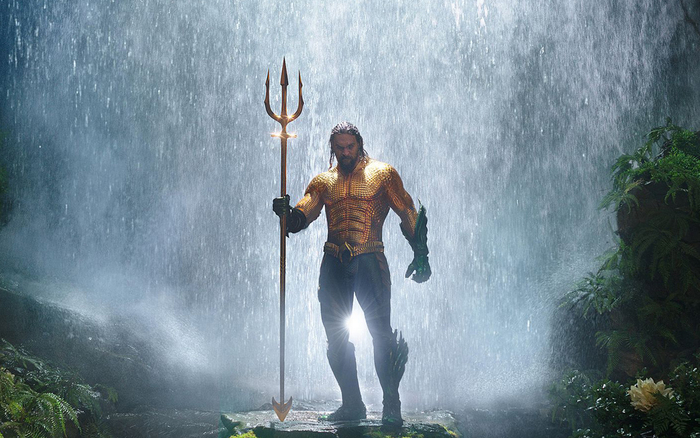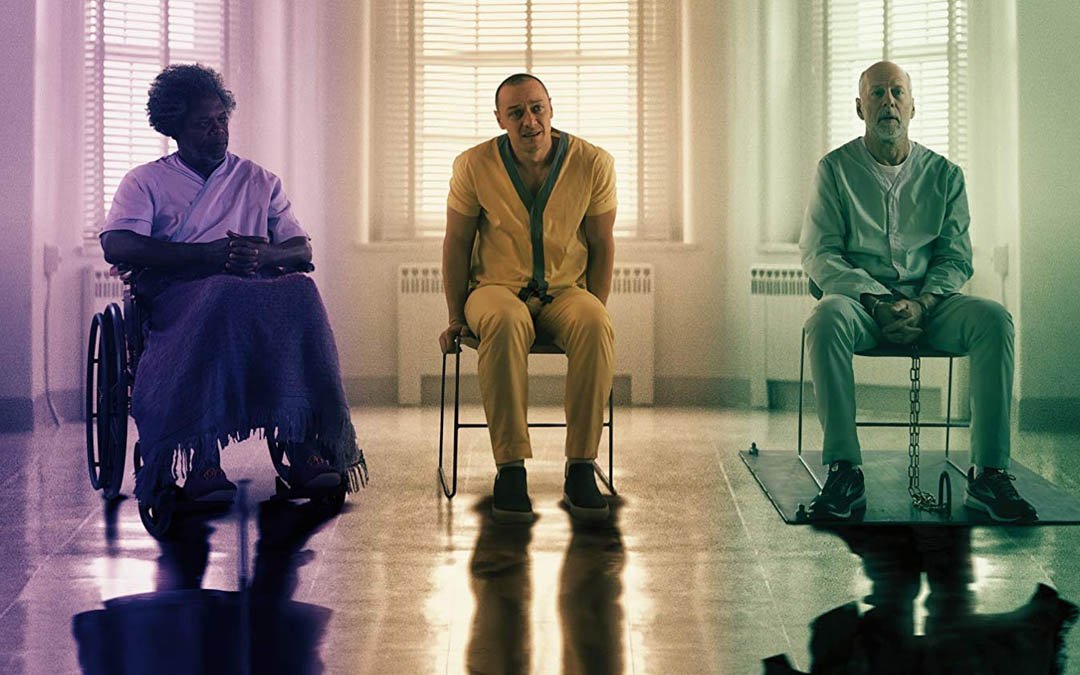All the Write Moves: 'Shazam!'
April 16, 2019
Despite being the newest arrival on the superhero-cinema scene, Shazam has been around longer than most of his peers, debuting in 1939, just one year after Superman’s first appearance. And while this is not the right space to explore Shazam’s complicated publication history, it’s sufficient to note that the character’s appeal is rooted in the baseline DNA of the superhero genre.
That’s just one reason why scrutinizing Shazam!—the new DC movie featuring the title character—is worthwhile. Since we’re now two decades(!) into the modern superhero-movie era, it would stand to reason that fans of the genre have come to expect more than simplistic, old-fashioned storytelling. Yet Shazam! is in some ways as retro as the granddaddy of big-budget superhero epics, 1978’s Superman.
Is it possible for a (somewhat) kiddie-oriented fantasy to thrill viewers who have grown accustomed to the earnest feminism of Wonder Woman and the grimdark violence of Zak Snyder’s DC flicks? To put the question another way, what techniques did Shazam! writers Henry Gayden and Darren Lemke employ while striving to make a vintage character palatable for modern audiences?
Boy + Wonder
The gist of Shazam! is that 14-year-old Billy Batson (Asher Angel) gets summoned to the lair of an ancient wizard named Shazam (Djimon Honsou), who grants Billy the ability to transform into a grown-up superhero (Zachary Levi) by saying the wizard’s name. Billy toggles between bodies throughout Shazam!, so most of the movie’s jokes and plot complications stem from 14-year-old Billy’s wonderment at his newfound talents.
In its earliest days, the superhero genre was designed for very young readers, hence the prevalence of colorful costumes, one-dimensional characterizations, moralistic messages, and simplistic power fantasies. Each of those qualities pervades Shazam!, so Gayden and Lemke use two reliable methods in order to give old-timey elements contemporary vitality—supplemental to more obvious techniques such as populating the script with cellphones, Internet searches, and social media, all of which help bring the narrative into current vernacular.
First, the storytelling of Shazam! borrows heavily from 1988’s Big, a body-switching comedy told from a kid’s perspective. Second, the storytelling of Shazam! alternates between kid’s-eye-view scenes and moments seen through the eyes of the movie’s grown-up villain, Dr. Sivana (Mark Strong). The utility of the Big-inflected material is obvious, because this material allows viewers to align with Billy’s attitude whenever he revels in his extraordinary abilities—something that will always resonate with viewers, no matter what year it is. The utility of the Sivana scenes is less obvious. These moments remind viewers that Billy exists in a dangerous world, thereby triggering the familiar “with great power comes great responsibility” syndrome. Counterbalancing Billy’s viewpoint with Sivana’s gives Shazam! balance and weight.
While it is true that the Sivana scenes are not as dimensional as the Billy scenes, seeing as how the antagonist slips into trite patterns of posturing and speechifying, an execution shortfall shouldn’t overshadow the prudence of the narrative approach that Gayden and Lemke took. Without the grown-up perspective, Shazam! would have been so lighthearted as to barely exist.
Takeaway: Integrating adult perspective adds weight to kid’s-eye-view stories.
It’s a Family Affair
Critics can always find plenty to lampoon about the superhero genre, but few elements are as susceptible to ridicule as the extended “families” of costumed heroes. Superman has Supergirl, Krypto the Superdog, Streaky the Supercat, and even Comet the Superhorse. Similarly, Shazam (who was previously known as Captain Marvel, no relation to the Marvel Comics character of the same name) is frequently joined in battle by Captain Marvel Jr., Mary Marvel, and others, all of whom wear costumes that are similar to Shazam’s.
Given this history, the folks behind Shazam! faced an interesting conundrum. The safe option would have involved discarding goofy elements from Shazam lore, such as the so-called “Marvel Family”, and a supervillain who looks like a worm. Instead, the Shazam! team leaned into silliness, so not only does the Marvel Family appear onscreen, but so does the evil worm. (Alas, talking tiger Mr. Tawny is nowhere to be seen.) That being the case, let’s consider tools that Gayden and Lemke used to help get outlandish stuff across.
The main emotional thread running through Shazam! involves Billy’s anxiety about being a foster child. When he lands in a group home filled with other misfit kids, Billy shuns the misfits and focuses on finding his birth mother. Nonetheless, the misfit kids embrace Billy, so he gains an unexpected family. This energizes the big third-act moment (spoiler alert!) during which Billy magically shares his superpowers with the other misfit kids, who transform into the Marvel Family.
Whereas many superhero movies imply the theme of individuals drawing strength from surrogate families (as in the Avengers films), Shazam! makes a direct statement to this effect. In this way, Gayden and Lemke sell the cartoonish visual of the assembled Marvel Family by embedding the image with emotional resonance.
Takeaway: Nearly anything can work in a story if it’s set up properly.
Fresh Ingredients
The climactic showdown is a staple of adventure storytelling, but superhero movies have taken this trope to an absurd extreme. Shazam! nearly turns this convention on its head, because several beats during the movie’s climactic showdown are straight-up jokes. Even with the laughs, however, the big battle at the end of Shazam! is ultimately quite pedestrian, so, like the Sivana scenes, the ending is more of a base hit than a home run.
Still, the comedy bits merit consideration because they represent a noble attempt to stretch a familiar genre’s boundaries. For precedent, recall the amazing climax of 1984’s Ghostbusters, during which the rampage of the Stay Puft Marshmallow Man epitomizes that movie’s funny/scary style. While not nearly as inspired, the jokes during the Shazam! climax emanate from similar narrative impulses.
Let’s accept as a given that audiences expect action movies to conclude with big action scenes. Fair enough. This doesn’t mean action movies must conclude with conventional action scenes. The Marvel epic Dr. Strange, for instance, was about magicians with the ability to warp reality, so the final showdown involved a trippy time-travel gimmick. The folks behind Shazam! get points for trying to custom-build a new sort of climax, even if the execution falls short of the intention.
Shazam! and its predecessors do well reminding us to think past obvious storytelling mechanisms. If your script belongs to an established genre, ask yourself what the conventions of that genre are, and then ask yourself whether the conventions must be honored slavishly. If you can find a way to deviate from the norm while maintaining consistency with the overall style of your script, the result will be something endearingly fresh, instead of something overly familiar.
Takeaway: Challenging assumptions is the path to innovative storytelling.
Written by: Peter Hanson
Peter Hanson is a Los Angeles-based writer, filmmaker and teacher. He directed the screenwriting documentary Tales from the Script, and he teaches at Pepperdine University and UCLA Extension. He provides script consulting at www.GrandRiverFilms.com.- Topics:
- Discussing TV & Film




